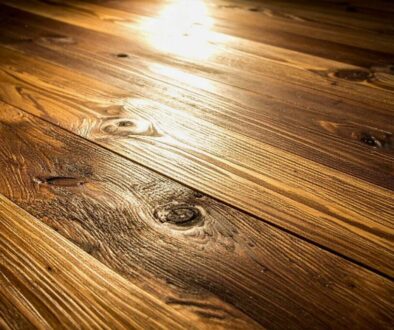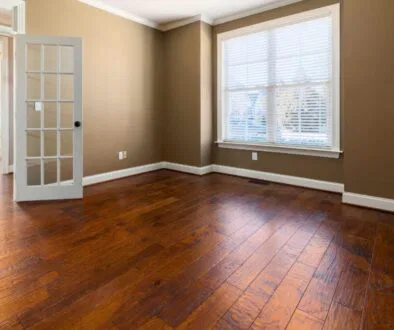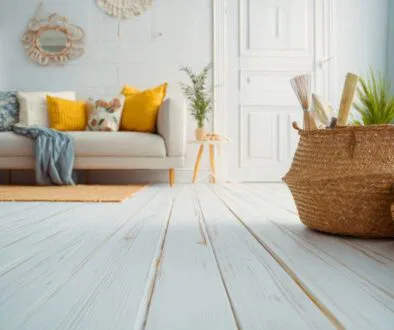Moisture Barrier For Wood Floors: What You Need To Know
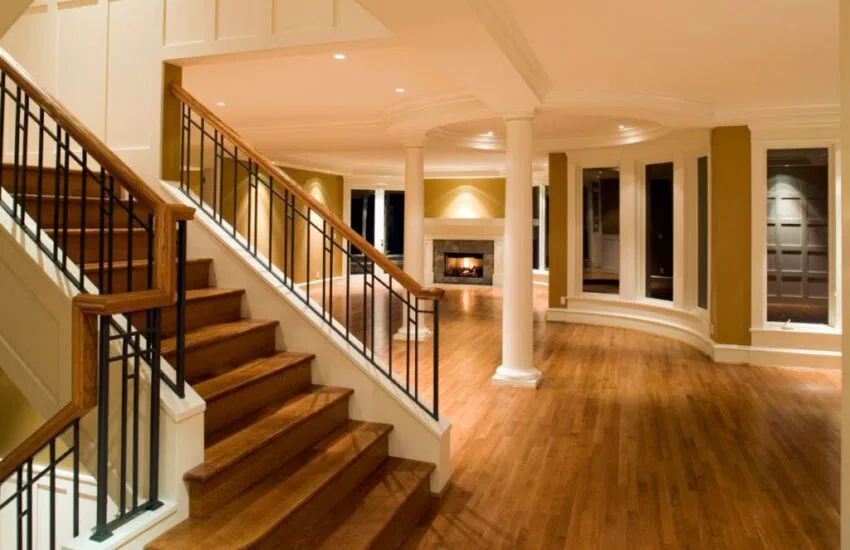
Published October 31, 2024
Moisture can severely impact flooring installations, particularly in humid conditions. If not addressed, it can progress to severe damage, resulting in expensive repairs and disruptions. Moisture barriers are not just important; they’re essential. They protect your flooring materials and ensure their longevity.
In this article, we’ll explore the significance of wood floor moisture barriers and their crucial role in enhancing the longevity and aesthetic beauty of wood and other floor types.
What Is A Moisture Barrier?
A moisture barrier, also known as a vapor barrier or moisture retarder, is a protective layer that prevents water from seeping beneath building materials.
This barrier is crucial in construction, especially for walls and flooring. It effectively slows or stops water movement in vapor, condensation, or liquid states. This helps protect materials from degradation.
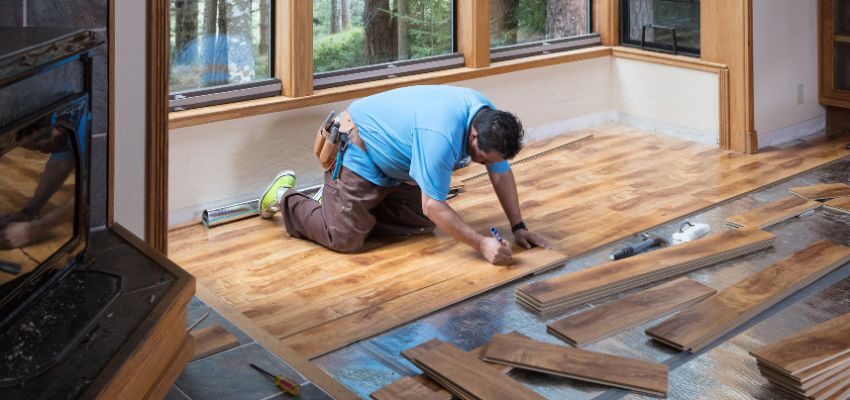
Types Of Moisture Barriers
When it comes to hardwood flooring, using the proper moisture barrier is crucial to ensuring durability and longevity. There are several types of moisture barriers available, each tailored for specific applications:
- Coatings. These are applied as a rolled-on, liquid coating that, once dried, creates a protective film. This barrier helps prevent moisture intrusion and enhances the flooring’s aesthetic quality by providing a smooth finish.
- Built-in protection. Certain flooring products feature water-resistant qualities. An example is Bostik GreenForce, which features a built-in moisture control membrane. This membrane provides dual functionality as both an adhesive and a moisture barrier.
- Water-resistant materials. Water-resistant underlayment materials provide extra protection for hardwood floors. They’re designed to manage moisture that can come through the subfloor. This helps preserve the integrity of hardwood flooring.
Homeowners should know the different types of moisture barriers. This knowledge helps them protect their homes from moisture damage, especially for those with hardwood, or vintage and specialty wood.
When Should You Use A Moisture Barrier With Hardwood?
Moisture barriers are crucial when installing hardwood over concrete subfloors. Concrete is porous, which means moisture can easily penetrate it. Without proper protection, this can lead to warping, cupping, and other forms of damage to the hardwood.
Moisture barriers should always be used in subgrade areas like basements, regardless of the subfloor type. This helps ensure lasting integrity.
Advantages Of Installing A Moisture Barrier Beneath Flooring
When installing flooring, mainly hardwood, adding a moisture barrier is essential. This step provides several benefits:
- Mold resistance. Moisture accumulation can lead to various problems, with mold being a significant concern. A moisture barrier creates a protective layer that effectively prevents mold growth. Remember, mold thrives in damp conditions and poses health risks. The barrier creates a healthier indoor environment also protects the flooring’s integrity.
- Wood rot prevention. Hardwood and composite materials are prone to wood rot after prolonged moisture exposure. Installing a moisture barrier protects flooring from water damage. This extension of its lifespan helps homeowners avoid costly repairs and replacements.
- Prevent cupping and other deformations. Wood naturally absorbs and releases moisture. Fluctuations in humidity can cause issues like cupping, warping, and twisting. These problems impact both appearance and functionality. A moisture barrier helps maintain the structural integrity and beauty of hardwood floors.
Installing a moisture barrier under flooring is a wise investment that protects your flooring and your home’s health. Whether you choose hardwood, laminate, or other materials, it provides long-term benefits for a more durable floor.
Frequently Asked Questions
Do I need a moisture barrier under hardwood flooring?
Yes. Hardwood is highly sensitive to moisture. Investing in a wood floor moisture barrier is necessary, especially if you have concrete subfloors or damp conditions.
Do I need a moisture barrier under vinyl plank or laminate flooring?
Yes. A moisture barrier is essential in both cases, especially over concrete subfloors or in humid environments. However, it’s less critical when laying vinyl planks over plywood subfloors or existing flooring. Remember, laminate flooring is made of wood-based layers, making it more susceptible to moisture damage.
What happens if wood flooring is exposed to excessive moisture?
When wood isn’t properly dried or sealed, it can absorb moisture from the environment. This can cause swelling, warping, or even rot. A moisture barrier is essential to prevent these issues.
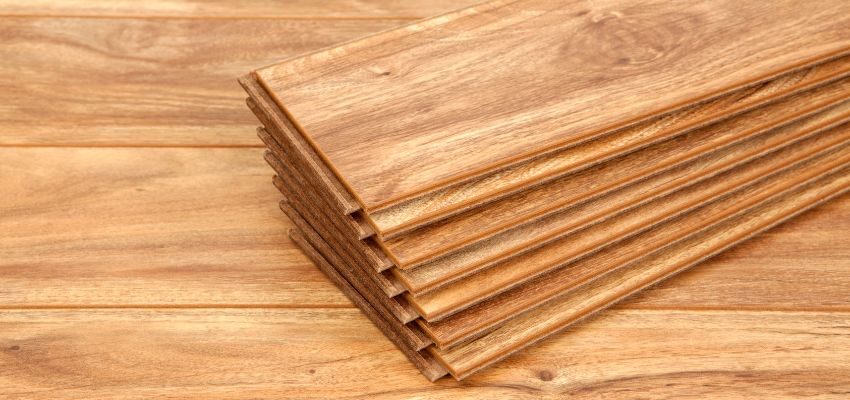
A Lasting Investment: Why Moisture Barriers Matter For Wood Floors
Moisture barriers are crucial in flooring installations, particularly for moisture-sensitive materials like hardwood. Investing in a wood floor moisture barrier will protect your wood flooring against rot, mold, and structural damage. The barriers preserve your flooring’s integrity and longevity in the long run. Don’t overlook this critical step—ensure your flooring lasts by incorporating a moisture barrier.
Hire The Timber Experts For Your Next Project
Vintage & Specialty Wood should be your source of the highest quality timbers from around the world. When it comes to fabricating and installing reclaimed wood or specialty wood products in your home, we don’t cut corners. We offer many reclaimed wood and specialty wood products such as Douglas Fir, white oak, and much more. We also offer timber framing and wood flooring services as well. Contact our team today to speak to a timber expert about what Vintage & Specialty Wood can do for you.

This Blog Is Fact Checked
This content has undergone meticulous fact-checking by our team of internal experts. Gain a deeper understanding of the high editorial standards we uphold on our website here.

About The Author
Experience, exploration, and knowledge are the hallmarks of writer Rei Bayucca. Her dedication to crafting articles that both inspire and educate will leave you thinking long after you’ve finished reading.

